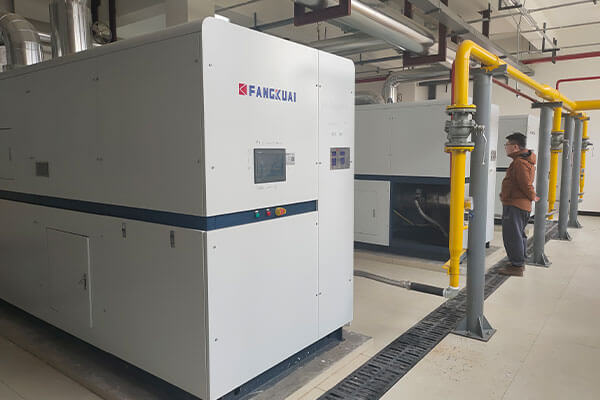The pressure in a vacuum environment is lower (70 kPa) and the boiling point of hot water is also lower (70°C). When the temperature rises to the boiling point, the hot water begins to boil and produce steam.

1. Relationship Between Water’s Boiling Point and Pressure
Water boils when its internal vapor pressure matches the pressure around it. At sea level (101.3 kPa), that happens at 100 °C. As you remove air and lower the pressure, water begins to bubble at a cooler temperature. For example, at roughly 70 kPa—about what you’d see at 3,000 m elevation—water will boil around 70 °C. You can think of it simply: less pressure means molecules need less energy to break free into vapor.
2. How Vacuum Changes Heat Transfer
Running a boiler under vacuum doesn’t just drop the boiling point—it also tweaks how heat moves. Steam generated at lower pressures still carries its latent heat, and when it condenses, it gives up that energy very efficiently. Because you’re working at cooler temperatures, you avoid hot spots and thermal shocks, so heat spreads evenly across the exchanger surface and responds quicker to demand.
3. Working Principle of Vacuum Boilers
Vacuum boilers (T6\T7\D6) —also called phase-change boilers—maintain a partial vacuum inside the vessel. Combustion heats the water, which evaporates at the reduced pressure. Steam rises, hits the cooler surfaces of the heat exchanger, and condenses back into liquid. That condensation sustains the vacuum and draws in more water to boil, creating a continuous cycle at temperatures typically between 80 and 90 °C.
4. Advantages of Vacuum Boilers
-
Lower Operating Temperatures
-
Boiling occurs below 100 °C, reducing risk of overheating, scaling, and corrosion.
-
-
Energy Efficiency
-
Reduced heat losses due to lower temperature differentials and minimal reheat requirements.
-
-
Uniform Heat Distribution
-
Phase-change heating provides even surface temperatures, yielding consistent process control.
-
-
Compact Footprint
-
High heat-transfer rates allow smaller equipment size compared to conventional boilers.
-
-
Enhanced Material Integrity
-
Absence of air and oxygen in the vacuum chamber prevents oxidation, preserving sensitive products in applications like food processing or material treatment.
-
Conclusion
By pulling a vacuum, these boilers make water boil at lower temperatures and harness the energy of phase change more gently. That leads to steadier heat, fewer maintenance headaches, and a smaller footprint compared to conventional systems. Whether it’s precise food-processing or light industrial heating, vacuum boilers offer a smart, efficient way to get the job done.
Get your best price
Quickly compare 3 FREE quotes
- Engineer quick quote
- The overall delivery speed is fast
- Financial choice
- Low installation costs and cost savings
25 years+ of boiler R&D
More than 20 innovative technologies


